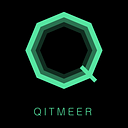
Blockchain Vs. BlockDAG
The dynamic nature of technology advancement and its application in the financial industry has been unique. Blockchain technology has been a game changer in the industry as it has brought about indispensable and immense applications like DeFi and Fintech, which have been explosive in recent years. Blockchain technology supremacy and versatility have been remarkable so far around the globe, not just in the financial sector but in the daily activities of humanity, as its limitless use has continued to amaze everyone beyond imagination.
Recent controversies have sprung up regarding the comparison and effectiveness of Blockchain and BlockDAG. For this article, we'll take a closer look and conceptualize the pros and cons of blockchain and blockDAG to enlighten you on their individual features and benefits.
What is Blockchain?
Blockchain is also popularly known as distributed ledger technology (DLT) simply because it is a digitally distributed database of records of all transactions across a network. It stores data and documents in an immutable chain. Through its cryptography hashing, the blockchain is distributed identically across different decentralized nodes, ensuring no one organization can own or manipulate it.
What is blockDAG?
BlockDAG, although it is still an unfamiliar concept, is the new explosive wave taking the financial market by surprise. BlockDAG, also called block-directed acyclic graphs, is an extension of the graphical ledger storage technology. BlockDAG refers to all visible blocks that permit a high orphan rate leading to higher throughput and accommodating conflicting transactions simultaneously.
Blockchain Vs. BlockDAG ( Features Comparison)
Taking a closer look at both features would help differentiate them better.
Gaining Consensus
A consensus is an automated process designed to ensure the existence of only one valid copy of a record shared by all the nodes. Unlike blockchain, although the consensus mechanisms (e.g., POW, POS) used vary in speed to one another, it doesn’t compare to blockDAG because blockchain creates a new block momentarily. The ability of blockDAG to allow parallel transaction processes by paving the way for adding multiple blocks on a chain at once makes it easier to reach consensus as it transmits data at a relatively fast speed.
Scalability and energy used
Although blockchain technology is secure, its slow speed makes it less scalable, unlike blockDAG, which has high speed and scalability with lower fee requirements. The energy consumed by blockchain is immense due to the high computational power required to mine blocks. Conversely, the energy saved by blockDAG is outstanding and monumental, as little energy is needed.
Transaction execution and speed
As earlier said, blockDAG generates higher throughput because multiple blocks get added once they are created at lower rates. Therefore blockDAG gives room for no latency in executing transactions. On the other hand, blockchain establishes a block at a time referencing back to the genesis block, which makes it less fast and non-scalable but secure, for example, Bitcoin.
Conclusion
Blockchain has existed for up to a decade, much longer than BlockDAG, as the idea of BlockDAG is still in the infant stage. There still needs to be more experience from projects that use blockDAG, unlike several blockchain projects that have prospered over the years and are still thriving. Jumping to early conclusions that the DAG model will sweep blockchain off its feet is not feasible because, technically, both technologies use a digital ledger to record transactions. Hence, it's best to be on the lookout for how blockDAG projects will play out in the future.
